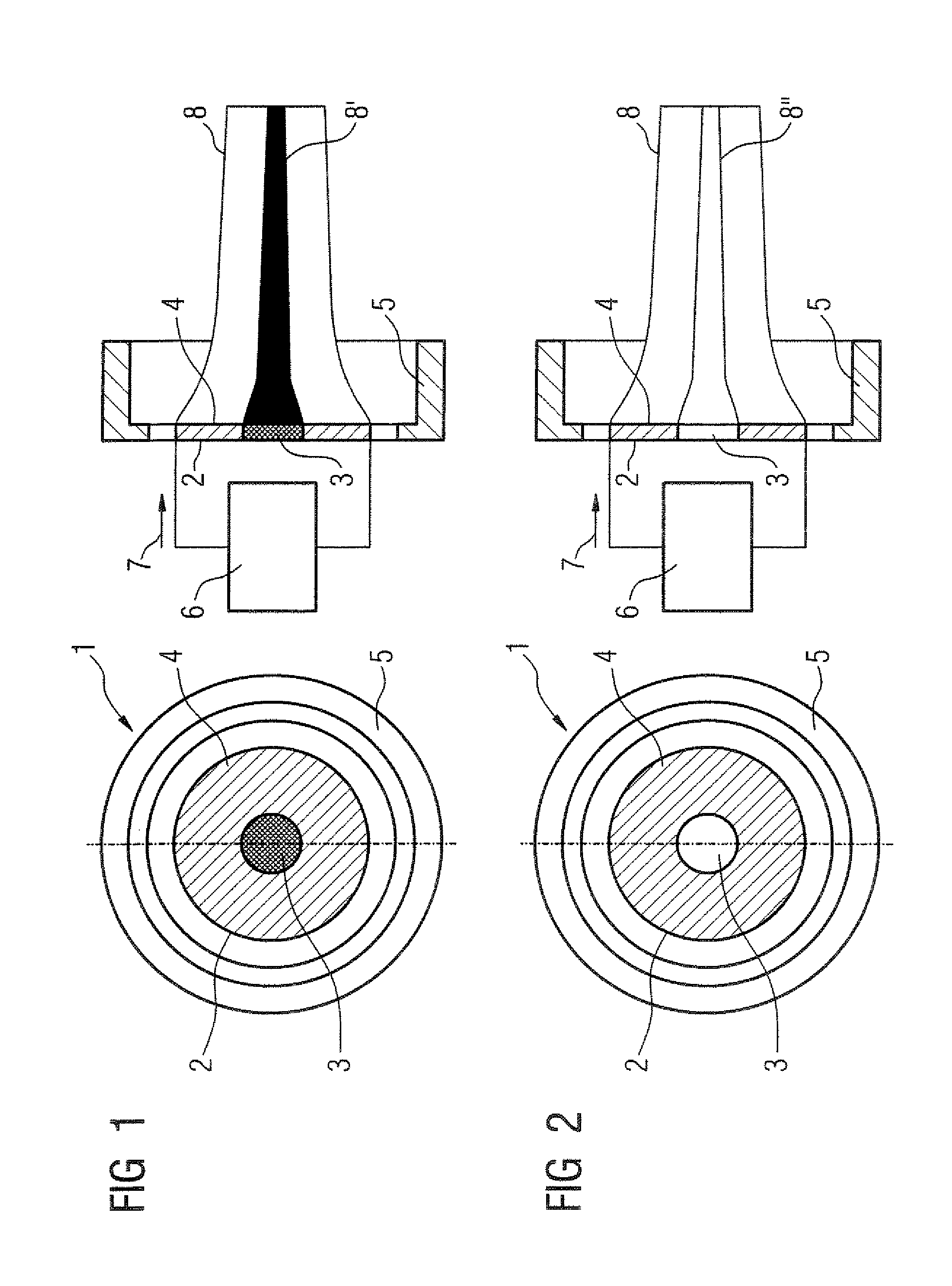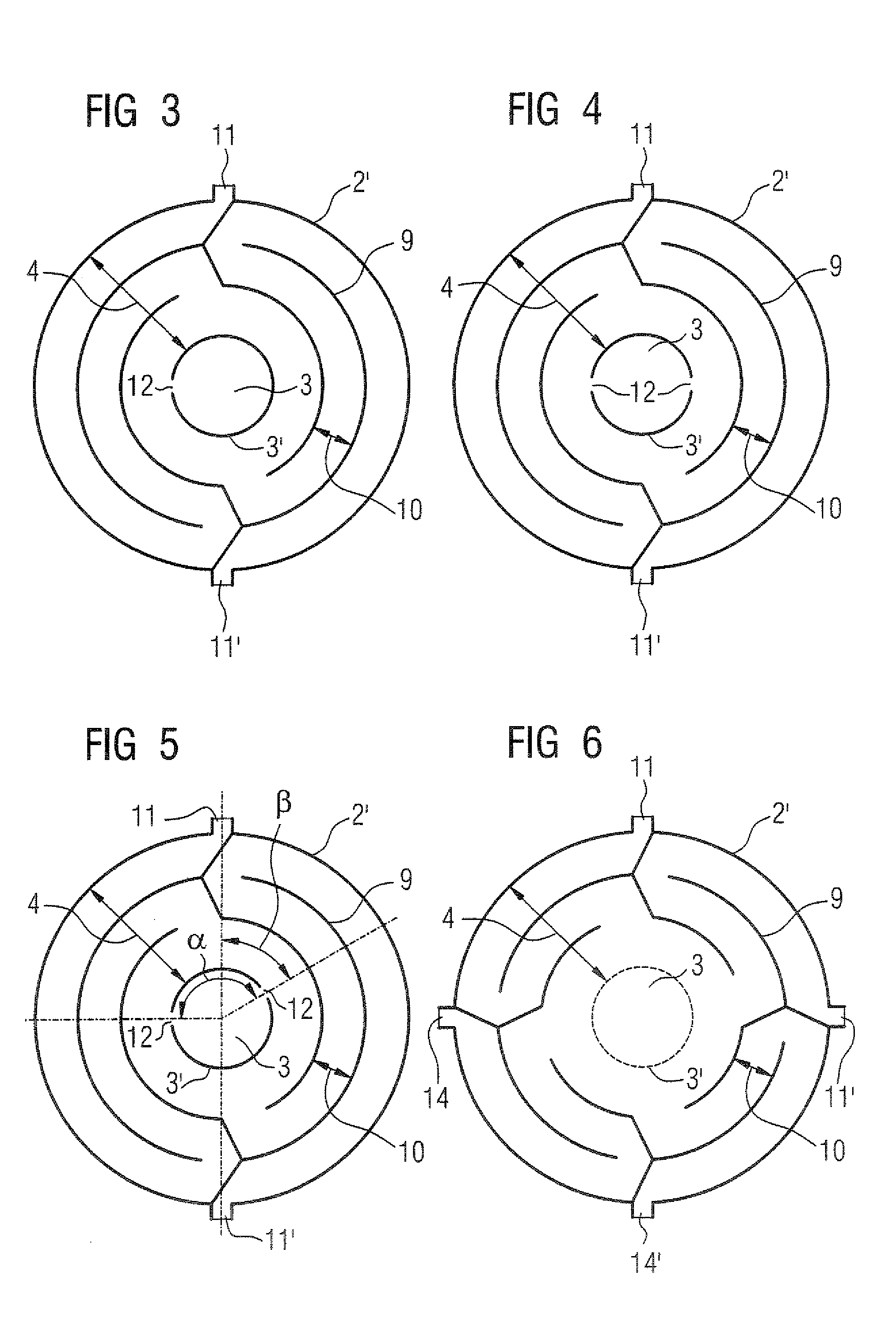Thermionic flat electron emitter
a flat electron and electron beam technology, applied in the direction of discharge tube main electrodes, x-ray tubes, radiation control devices, etc., can solve the problem that the electron beam can only be partially compensated by focusing elements, and achieve the effect of cost saving
- Summary
- Abstract
- Description
- Claims
- Application Information
AI Technical Summary
Benefits of technology
Problems solved by technology
Method used
Image
Examples
Embodiment Construction
[0031]FIG. 1 shows a conventional surface emitter 1 in a plan view and in section. The plan view shows the emitter plate 2 with a central region 3 (dark hatching) and the region 4 (light hatching) adjoining this central region 3. The emitter plate 2 is surrounded by an annular focusing element 5. The vertical dashed line proceeding through the center point of the emitter plate 2 symbolizes the section plane for the section drawing.
[0032]The heater 6 that heats the emitter plate 2 by means of a heating current 7 is schematically shown in the section drawing. In a conventionally-designed surface emitter 1 the central region 3 emits an electron beam of high density 8′. This is shown dark in order to indicate the high electron density. The region 4 adjoining this central region 3 emits an electron beam of medium density 8. The focusing element 5 arranged around the emitter plate exhibits the shape of a flat cylinder open at one side, with the emitter plate 2 arranged on the cylinder bas...
PUM
 Login to View More
Login to View More Abstract
Description
Claims
Application Information
 Login to View More
Login to View More - R&D
- Intellectual Property
- Life Sciences
- Materials
- Tech Scout
- Unparalleled Data Quality
- Higher Quality Content
- 60% Fewer Hallucinations
Browse by: Latest US Patents, China's latest patents, Technical Efficacy Thesaurus, Application Domain, Technology Topic, Popular Technical Reports.
© 2025 PatSnap. All rights reserved.Legal|Privacy policy|Modern Slavery Act Transparency Statement|Sitemap|About US| Contact US: help@patsnap.com



